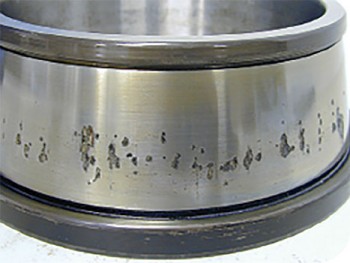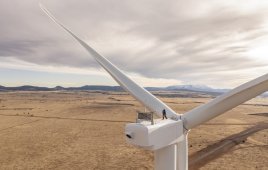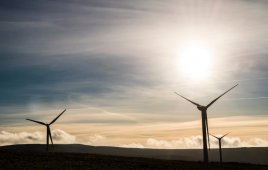
Premature bearing wear, the primary cause of turbine-component failures, is a problem that has long plagued the wind-energy industry.
Bearing trends mainly focus on extending bearing life and reducing issues with wear, which is the primary cause of turbine-component failures, a problem that has long plagued the wind-energy industry. Due to this, many OEMs have accepted the challenge to developing and perfecting a high-performance bearing. The goal is to catch a bearing problem before it causes unnecessary downtime and maintenance. Engineers have been collecting and analyzing data to address possible issues well before the occurrence of failure.
Recent research suggests that axial cracks on inner rings of high speed and intermediate speed bearings have become a leading cause of wind-turbine gearbox life issues. Technical papers on axial cracking in the past couple of years have focused on why this unusual bearing phenomenon is so prevalent in wind-turbine gearboxes.
Bearings for all turbine components are selected to meet a 20-year design life, with a low likelihood of failure. Most manufacturers follow Germanischer Lloyd guidelines for gearbox bearings. GL requires analyzing gearbox bearings for Rolling Contact Fatigue (RCF) resulting in a calculated life of at least 130,000 hours with a likelihood of failure at less than 10%. However, the axial cracking failure mode differs from the classic RCF failure mode. RCF failures are caused by damage to the bearing material that accumulates over time at well-understood rates. Axial cracking failures are relatively recent phenomena and their failure modes are less well understood.
The axial cracking failure mode of a bearing mainly occurs on the inner ring typically mounted to a shaft with an interference fit. The ring is heated during assembly onto the shaft. When the ring cools, it shrinks – holding the itself in place, but also creating tensile stress in the ring that increases the possibilities for axial cracking.
Some proposed solutions may incrementally extend life or prevent catastrophic failures with early axial-crack detection. For example, an asymmetric torque limiter addresses the root cause – rapid and severe loading that can initiate the stress-induced white-etch area (a subsurface microscopic material alteration) damage. Simple frictional slip torque limiters are commonly used to protect wind turbine drive systems from severe torque overloads, such as generator short circuits. However, no evidence has been found that a basic torque limiter can provide protection against axial cracking. An asymmetric torque limiter has a much lower slip setting in reverse than in the opposite direction. Field tests on wind turbines with and without the asymmetric torque limiter have demonstrated its ability to significantly reduce the maximum reverse torque and rate of torque increase. The device lowers the maximum stress and strain rate caused by the rollers impacting the bearing raceway during a torque reversal. This approach also dampens torsional vibrations to reduce the number of reversals.
Another trend is black-oxide bearings. These bearings have a surface layer of protection that increases a turbine’s reliability and performance. The coating is specified for all types of critical bearings, and can be used in new installations or serve as an upgrade.
Black-oxide bearings can: increase turbine uptime by enhancing resistance to corrosion and smearing; improve performance in low-lubrication conditions; limit the risk of fretting, micropitting, and cracking; reduce potential damage from aggressive oil additives; and reduce the effects of friction and wear.
The black oxidation surface treatment is applied to a bearing’s rings and rollers. The process takes about 15 different immersion steps to form a thin, dark black surface layer delivering a significant performance upgrade for the broad range of bearing types and sizes in wind turbines.
Lastly, one manufacturer released a few guidelines on proper bearing handling and storage. The guidelines are to help extend the life of the bearing and reduce downtime.
Filed Under: Bearings, Components, Featured, Turbines





The bearing for slip ring is very important, MOFLON uses the NSK bearing, which hold the quality of slip rings.
Please get to know more information: http://www.moflon.com
Yes, it is must be a new trends in bearings, thrust bearing varieties can enable rotation, support and drag and are vital for automotive, marine, and aerospace applications. Ball screw bearings help promote precision in machining, aircraft, robot, and semiconductor production. Needle bearing models employ small rollers to help reduce friction of rotating surfaces.
More information: http://www.arslipring.com